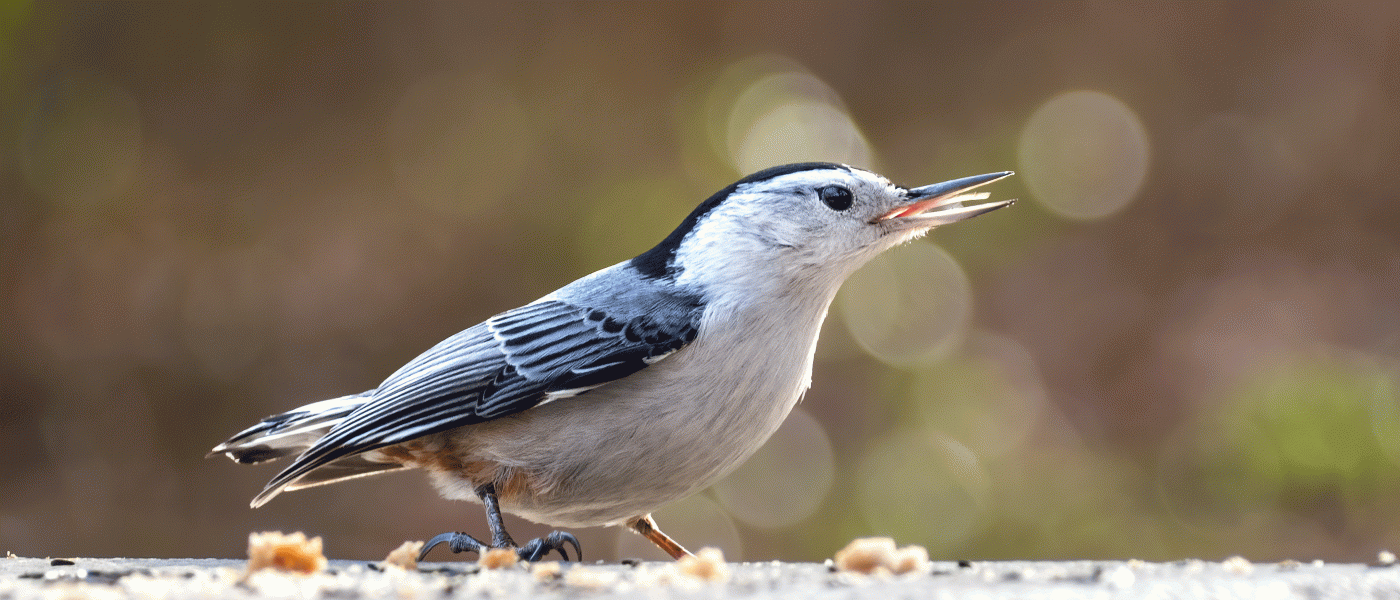Birds of Brooklyn: White-Breasted Nuthatch
The white-breasted nuthatch (Sitta carolinensis) is sometimes referred to as the “upside-down bird.” It gets this name from the way it finds food. Usually starting at the top of a deciduous tree, the bird works its way down the trunk, headfirst, looking for food—including beetle larvae, scale insects, caterpillars and spiders.

The nuthatch part of its common name comes from its ability to hammer open large seeds, including acorns, to consume the meaty interiors. This is especially helpful in winter, when the number of insects is greatly reduced. Bird feeders with a good supply of sunflower seeds and peanuts are likely to attract white-breasted nuthatches. This bird also likes to store seeds for later consumption—careful observers will see the nuthatch come to a feeder, take a seed, fly away, and then return and repeat the operation over and over.
Another winter strategy is to join a feeding flock, in which a variety of bird species coordinate to search for food together. Nuthatches will often join chickadees and downy woodpeckers. The more eyes, the better the chances of avoiding a predator like a cooper’s hawk or sharp-shinned hawk.
The white-breasted nuthatch’s cousin, the red-breasted nuthatch, is very similar, and it’s easy to mistake one for the other. But there are differences. Besides the color of the breast, they are slightly different sizes—the white-breasted being slightly larger. The white-breasted also likes deciduous trees, while the red-breasted prefers evergreens. And the white-breasted is a resident and sometimes migrant in the NYC area, while the red-breasted is an irruptive migrant, appearing in good numbers some years and absent entirely in others.


Male and female white-breasted nuthatches form close pairs. This is true during the spring breeding season and continues for the rest of the year. When you see one white-breasted nuthatch you are very likely to see a second. Males and females look very similar, with the males having a black crown stripe and females having a gray one. A possible breeder in Central Park and Prospect Park, the nuthatch is a secondary cavity nester. This means that they use a cavity created by a woodpecker in a previous year. They also use natural cavities formed by broken limbs and natural decay, and they will even take a man-made bird box as a nesting site.
The nest inside the cavity is constructed using bark, leaves, and dirt and is lined with fur, which the birds find on animals. I have witnessed a nuthatch pick fur off a sleeping raccoon (a not-uncommon behavior, also observed in the tufted titmouse, among others). Clutches consist of between 5 and 9 eggs and the entire nesting period is slightly less than 30 days. The nuthatch is very common, and on Long Island is rated as one of the top ten most common birds.
Their very nasal song can be sung at any time of the year, but especially in the early spring. The white-breasted nuthatch has to be among the top of any birdwatcher’s list of favorites. It is colorful, easy to attract, and a pure pleasure to observe.
The Birds of Brooklyn series looks at some of the most familiar and fascinating birds that call Kings County their habitat.


